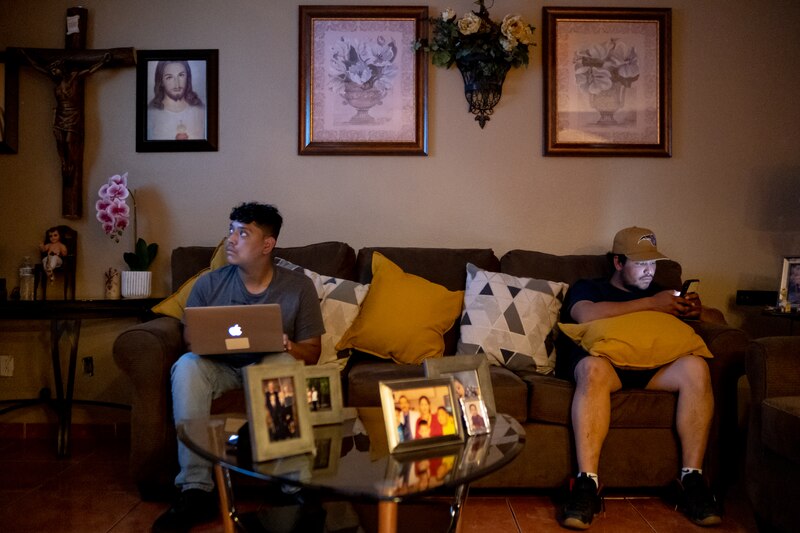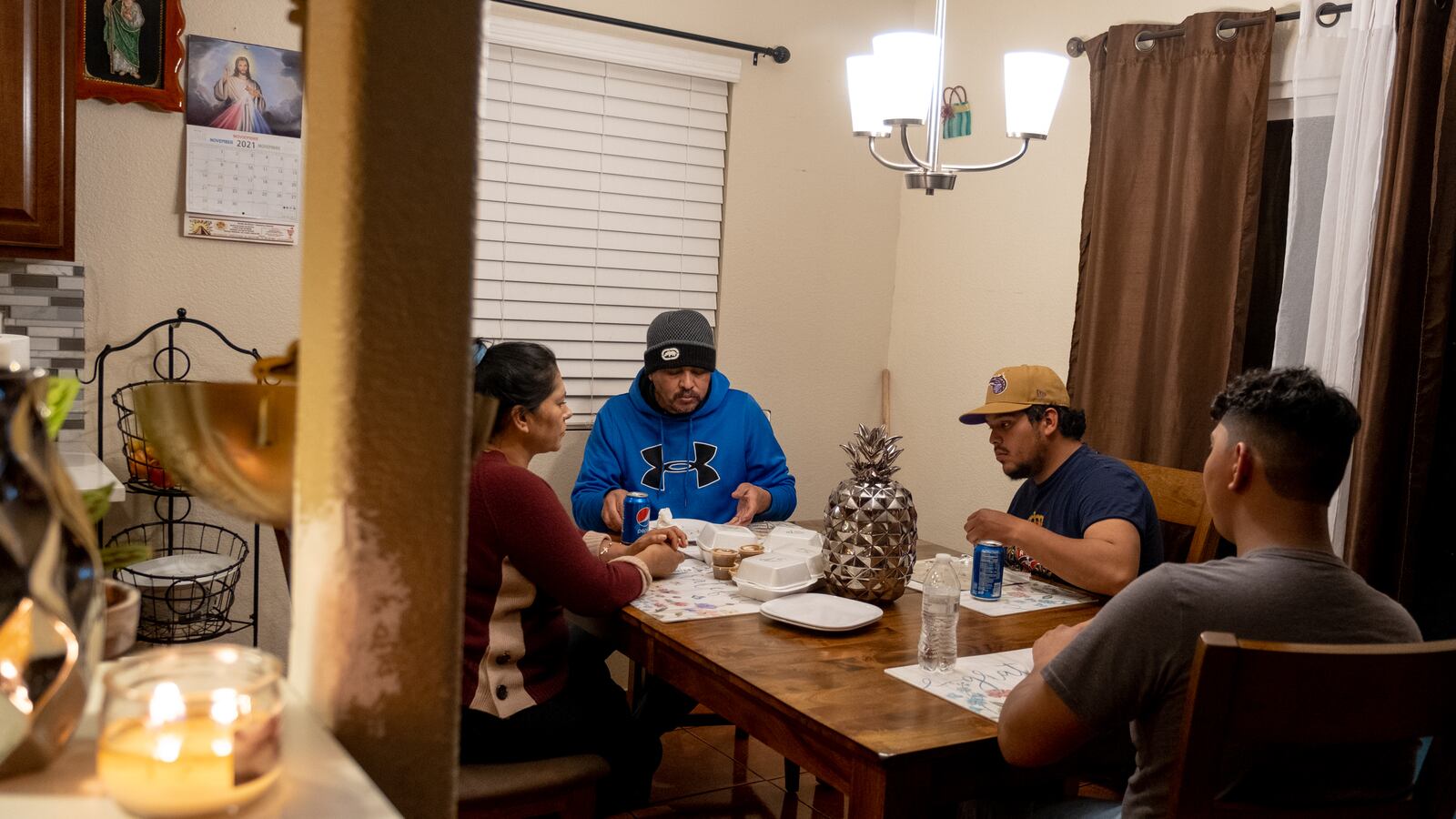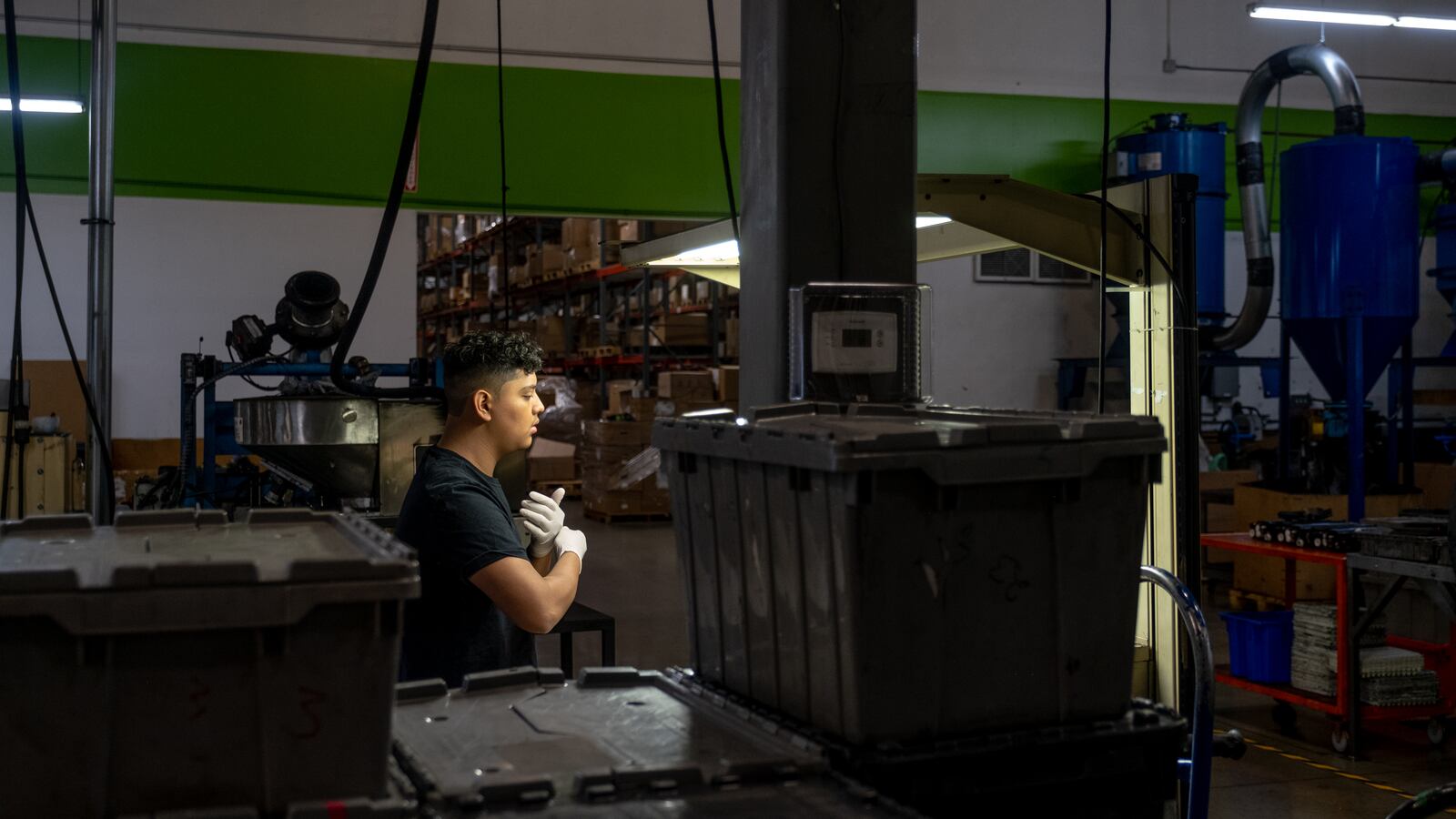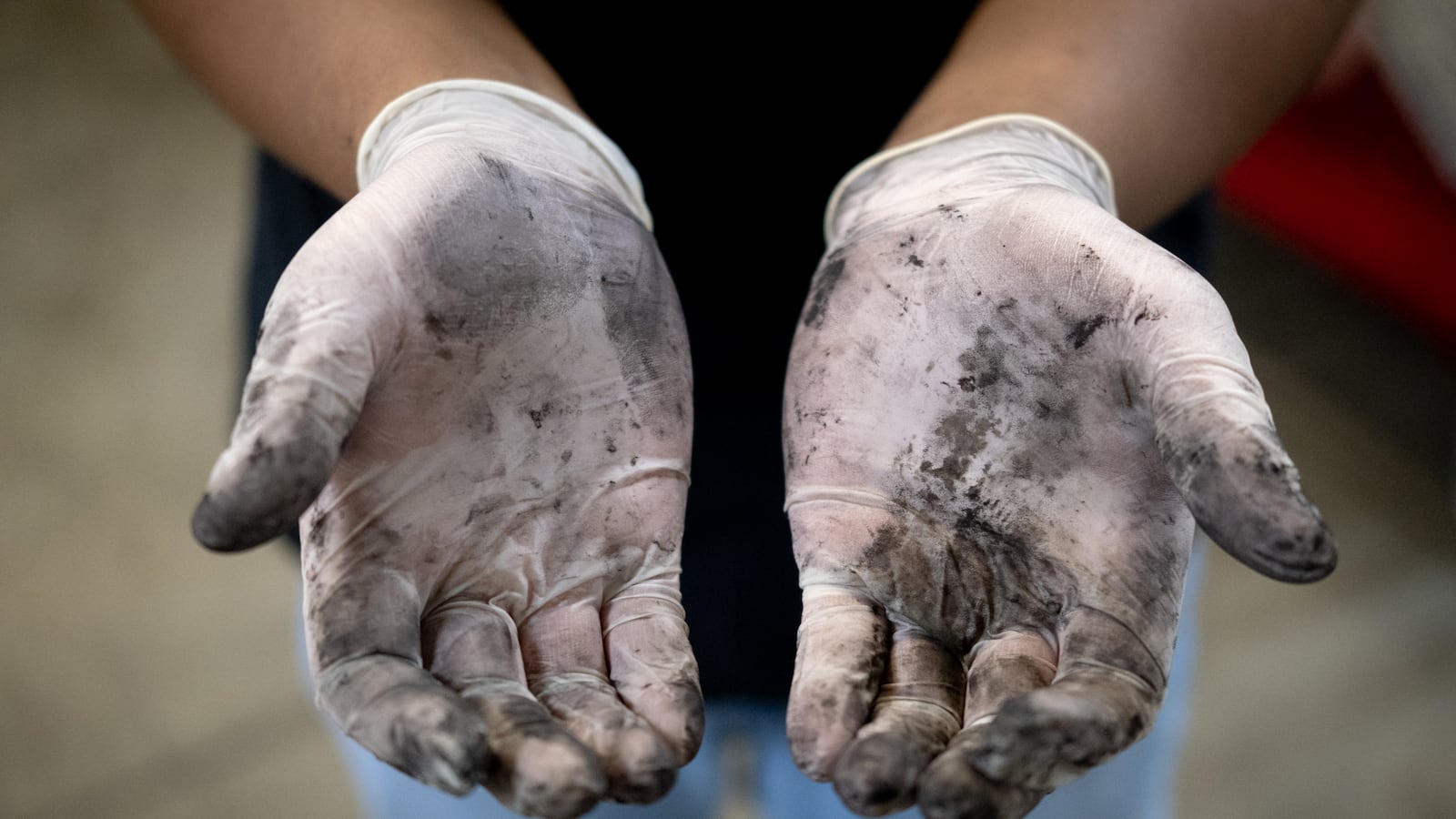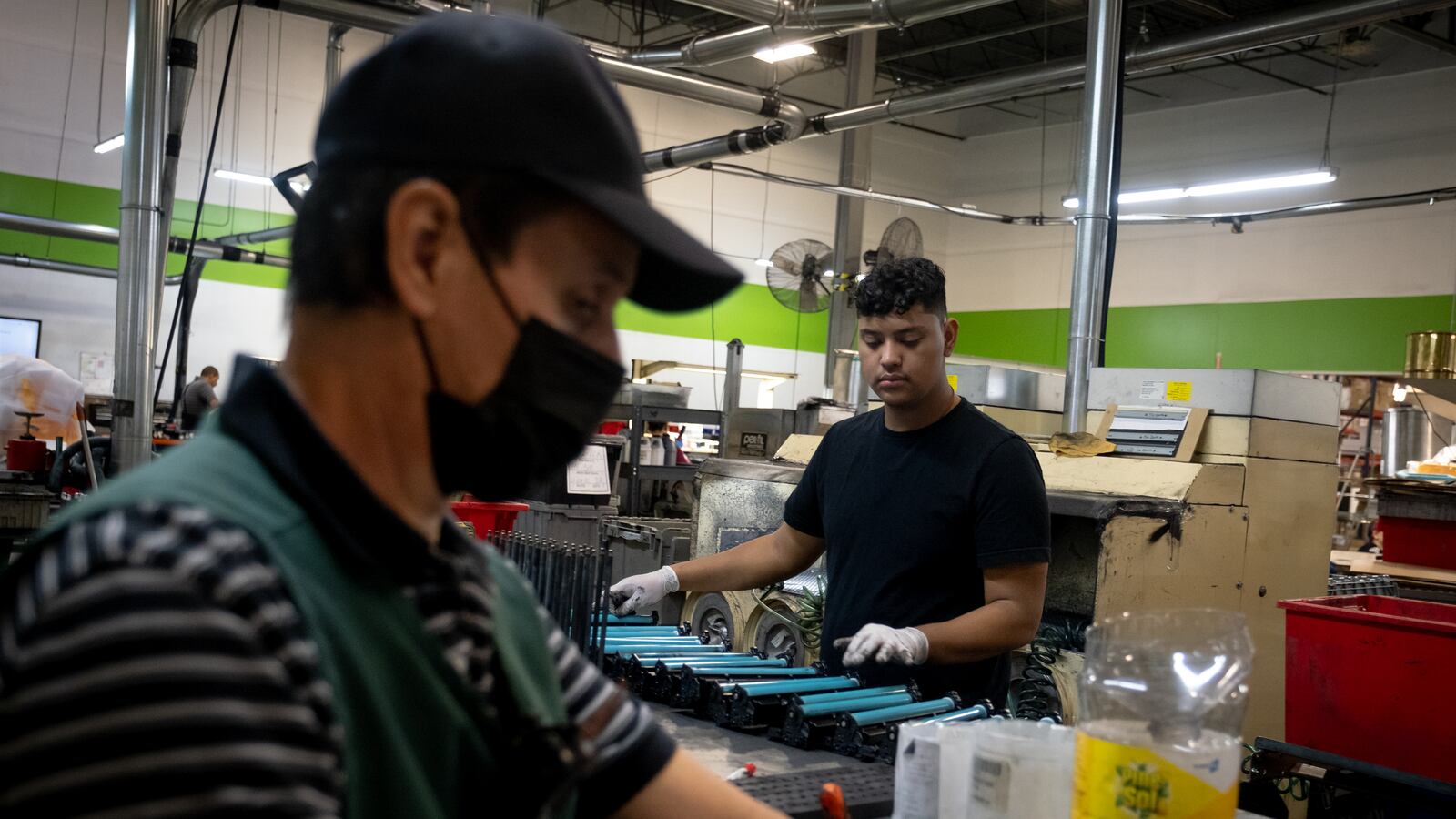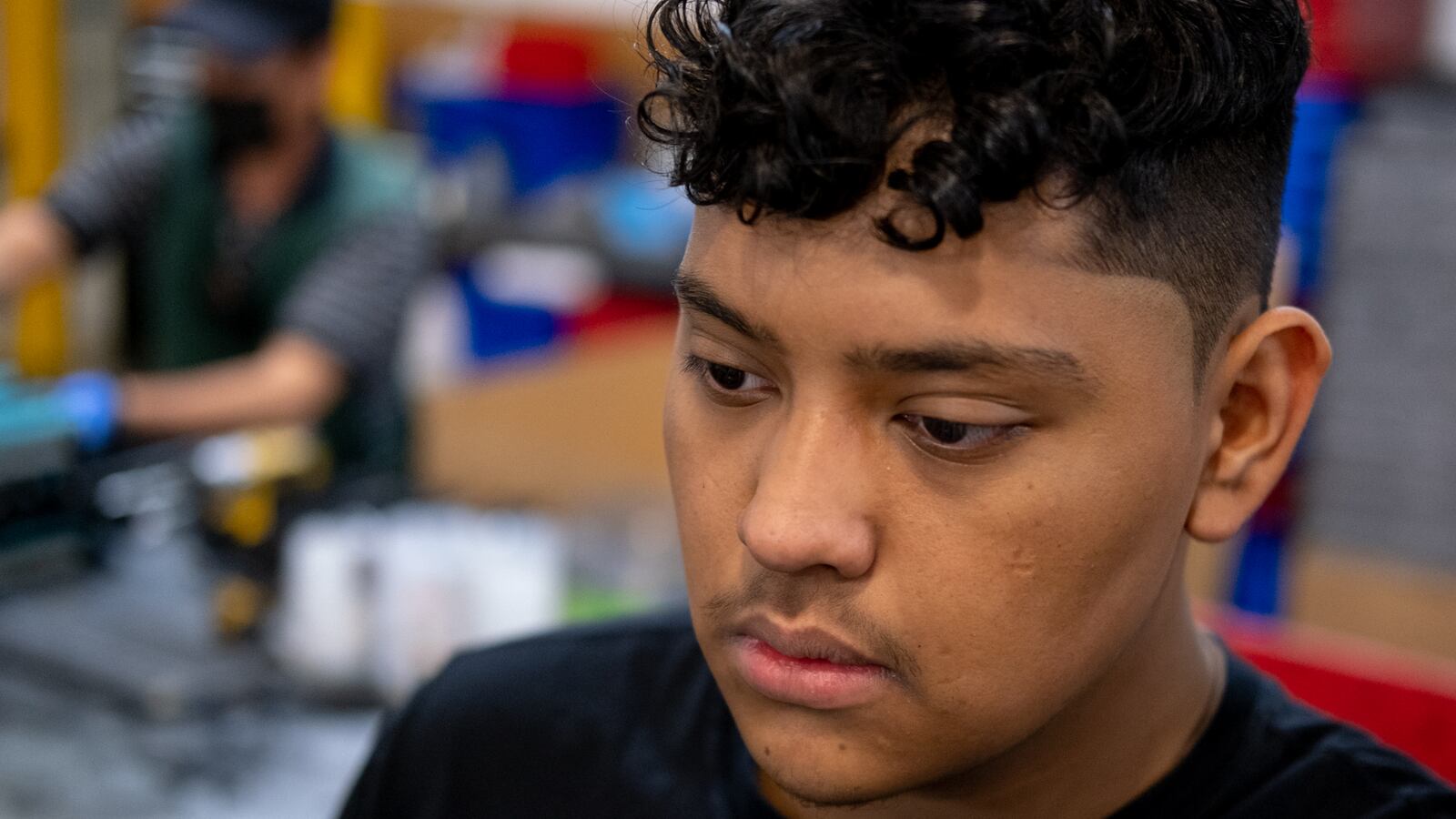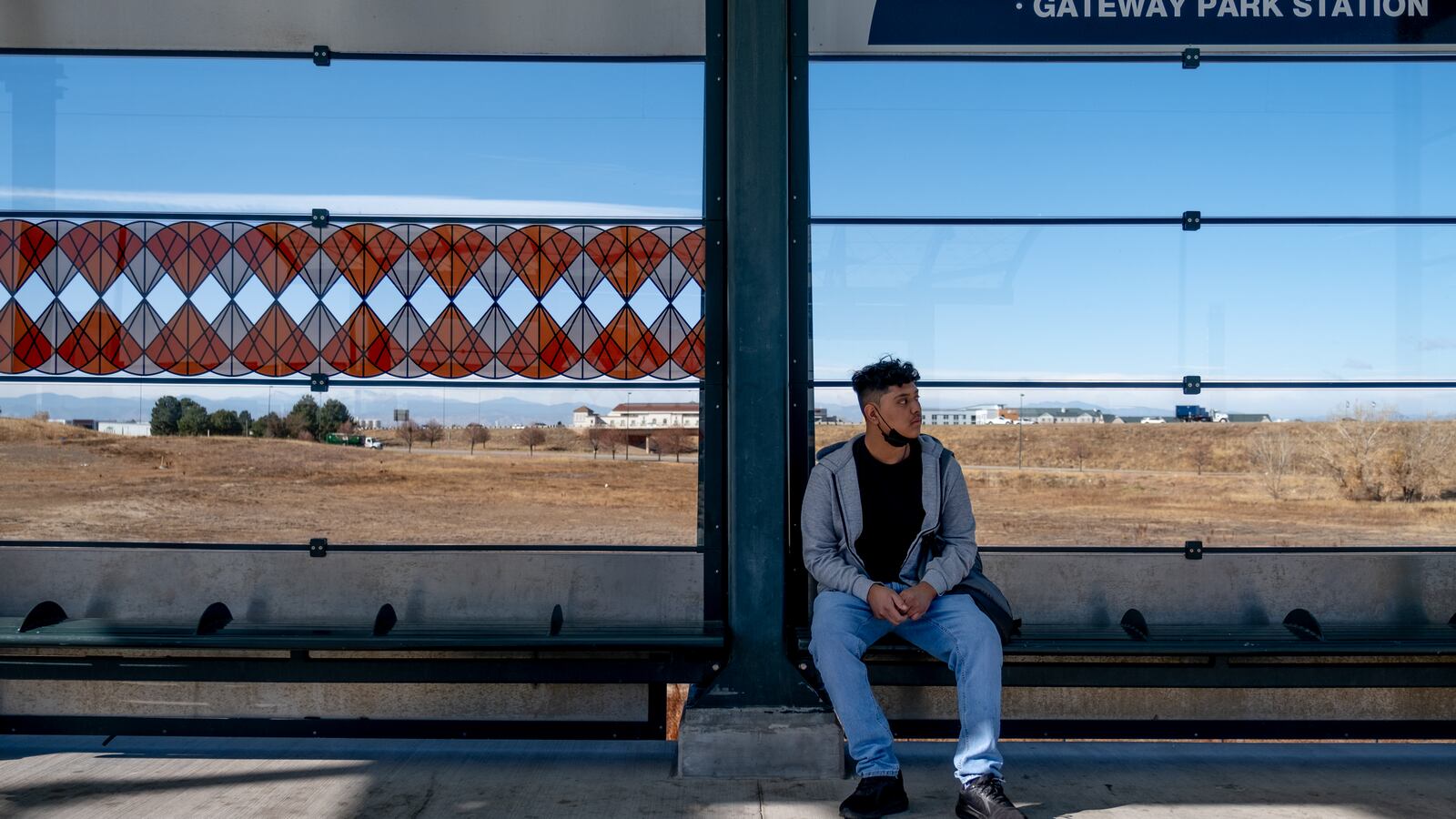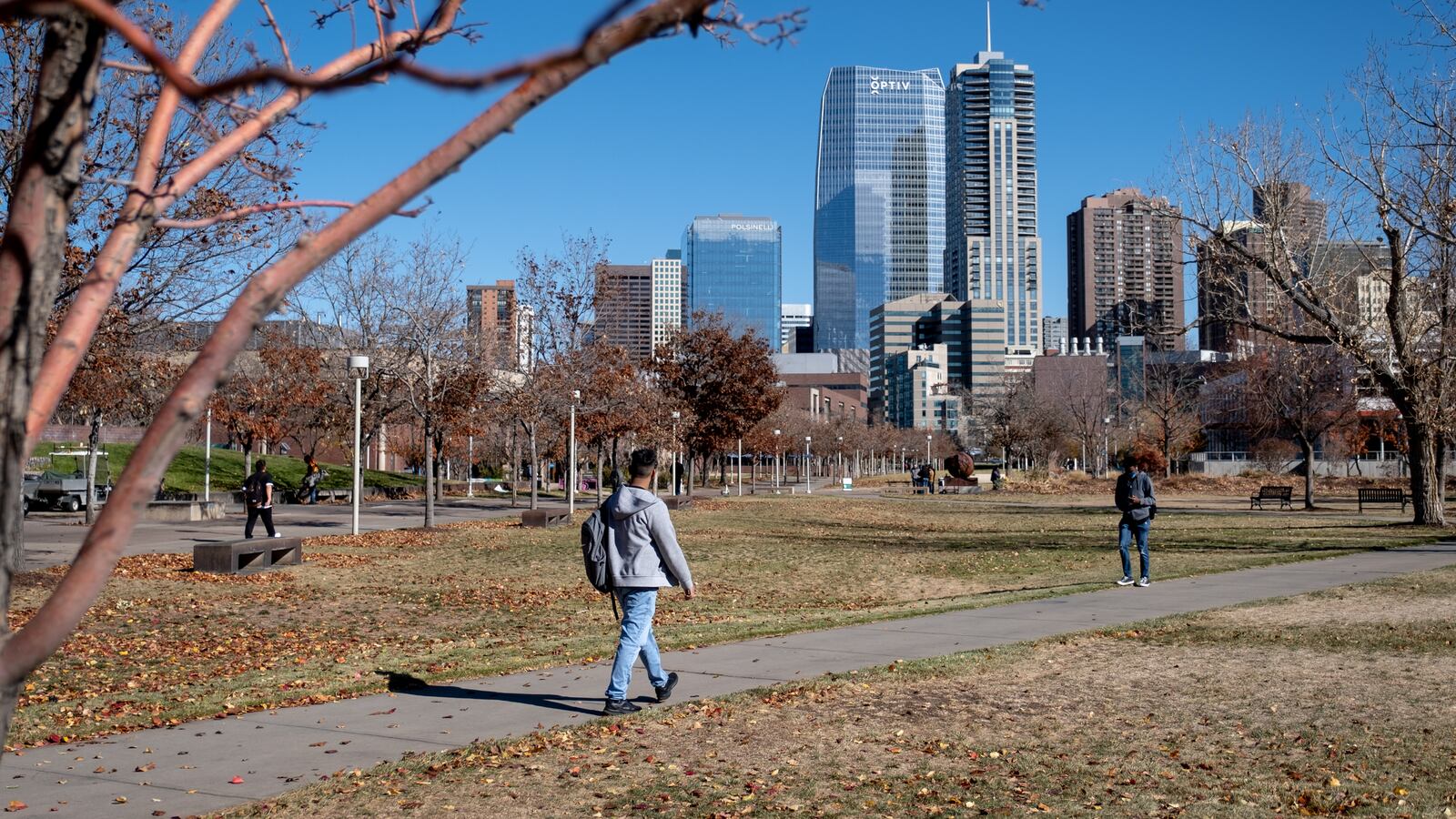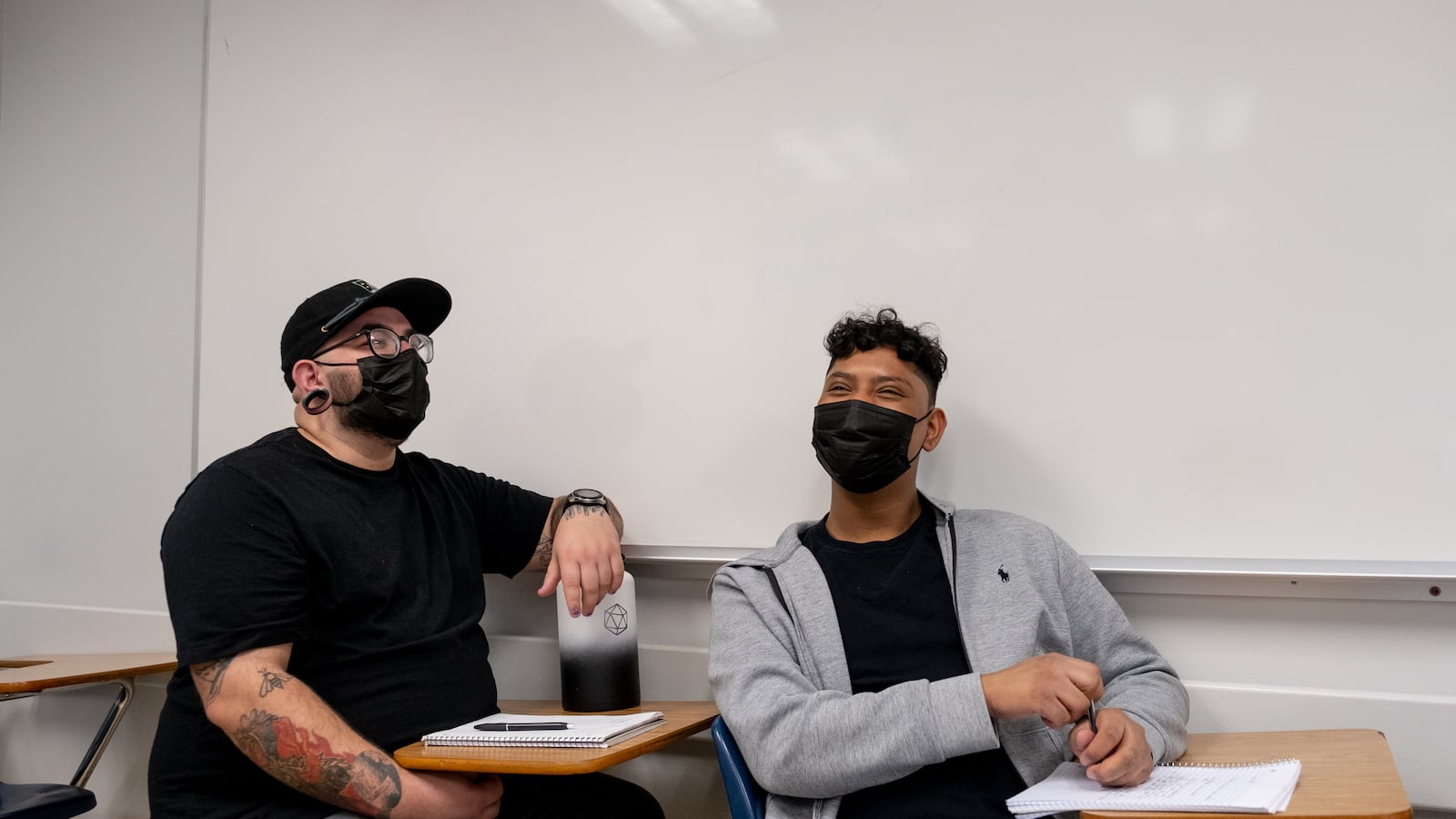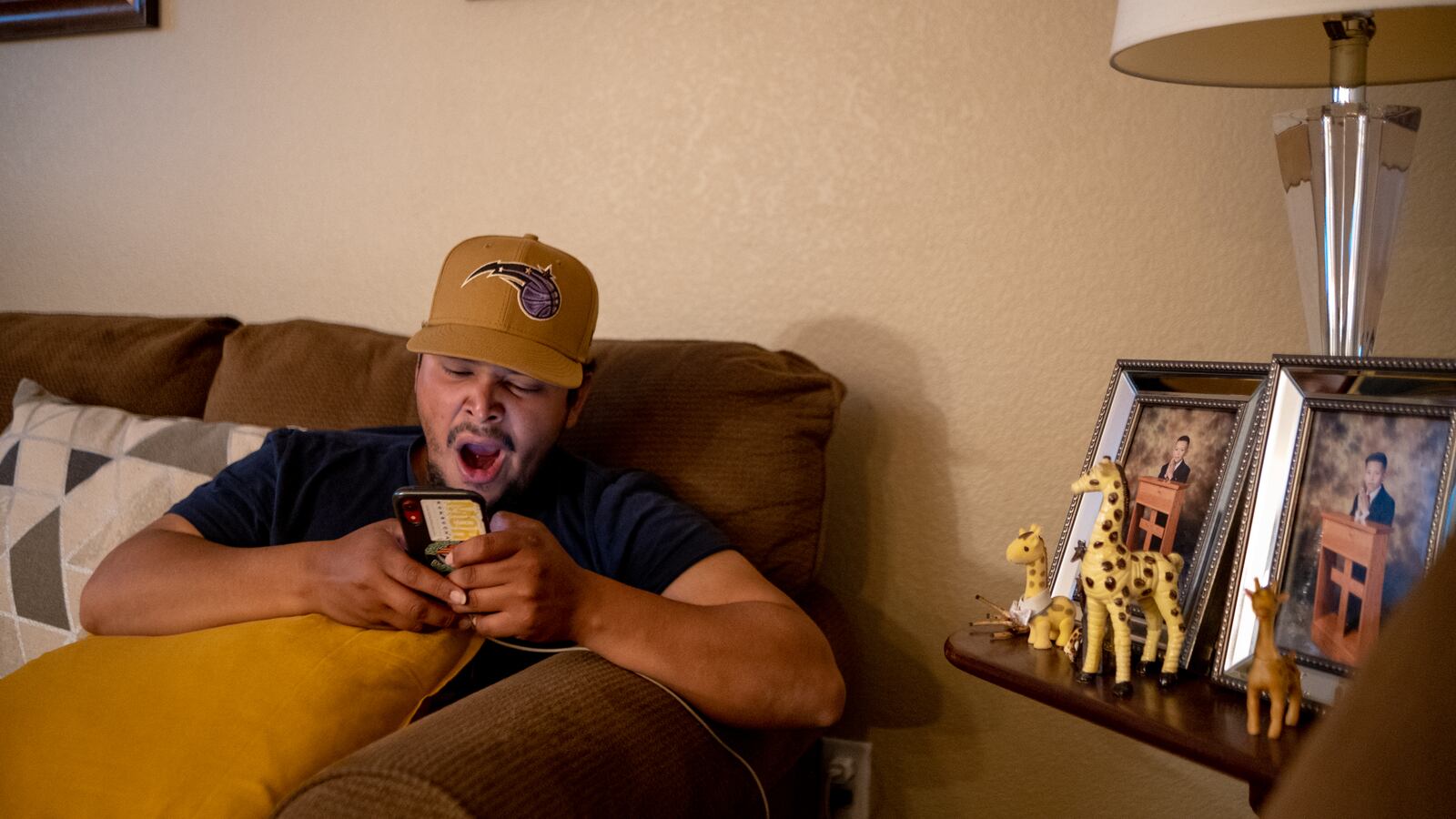Jimy and Luis Hernandez’s alarm wakes them before the sun rises.
The brothers try to move quietly about their parents’ northeast Denver home so they don’t disturb their siblings.
Luis, 18, might watch the news or help his mom prepare lunch before they head to the toner cartridge factory where he works part-time to help pay for college. He’s enrolled at Metropolitan State University of Denver.
Jimy, 21, usually skips the kitchen as he hustles to get ready for his full-time job paving asphalt for a construction company. He wanted to go to college, but couldn’t navigate the path there.
The brothers’ divergent paths highlight the challenges Hispanic men face in getting into college — and in getting through.
In Colorado, most Hispanic high-school graduates follow a path more like Jimy’s. Fewer than half go to college — a rate lower than that of Black men and Hispanic women.
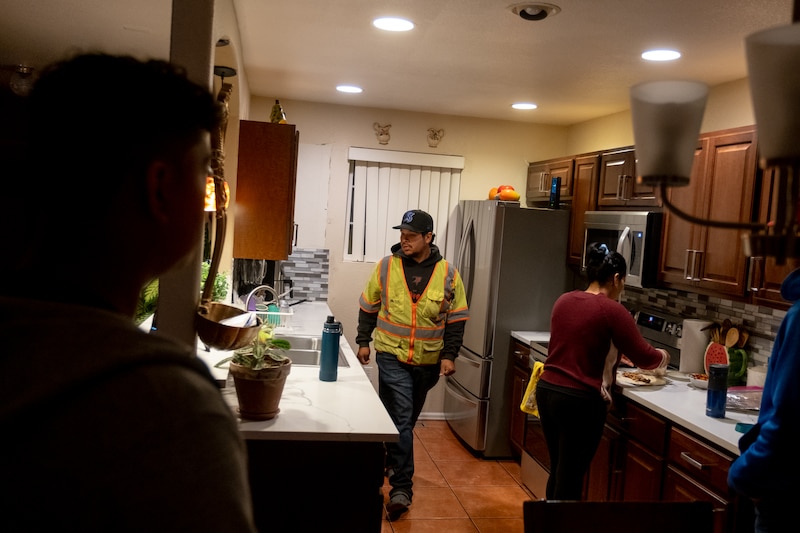
But even when, like Luis, they get to college, the odds remained stacked against them. Just 41% of Hispanic men at Colorado’s public four-year universities make it to graduation, according to recent federal data. At community colleges, less than a third graduate.
This all adds up to enormous disparities. Among states, Colorado has one of the most highly educated populations, but only a quarter of Hispanic residents have a college credential, the lowest among all groups. That compares with 61% of all Colorado residents.
That gap exacts a heavy toll on the finances of families in a state where 1 in 5 people identifies as Hispanic. It also has implications for the state’s prosperity. For Colorado to meet its self-set goal of 66% of its residents having a college credential, getting more Hispanic men to enroll in and complete college is essential.
In the Centennial State and across the nation, however, Hispanic men uniformly have been an afterthought for higher education, said Wil Del Pilar, Education Trust vice president of higher education policy.
“I don’t think that it’s been a focus,” Pilar said. “If you’re not represented at the table or pushing folks to think about this population of students, then I think that they often get forgotten.”
Barriers to higher education
Multiple reasons lead to Hispanic men often missing out on a college education.
One barrier is money. In Colorado, Hispanic families tend to have lower-than-average incomes. Many Hispanic men may be the first in their families to go to college. They can’t lean on family advisers to learn when to start preparing, where to apply, or how to secure financial aid.
Add to that expectations from some families to help support the household or care for siblings.
If they do get to campus, Hispanic men may find not many people share their experiences and understand their challenges. Fewer than one in 10 tenured professors are Hispanic, which is important in making students feel welcome and in helping them connect with mentors who can guide them.
An unmarked path to college
From the time they were young, the Hernandez brothers understood that college was an expectation.
As immigrants from the Mexican state of Zacatecas, parents Mariela and Jaime preached about taking advantage of every opportunity in the United States. College would unlock new careers in fields that would pay well and ensure they would work hard with their minds and not their backs.
“My dream has always been for my children to have a better life than what I had,” Mariela Hernandez said. “I want them to grow up and do what they love — not to have to work as much as I do. I want them to have a beautiful life.”
But the Hernandez brothers’ journeys highlight how Colorado’s, and the nation’s, college system produces unequal results — even within the same family.
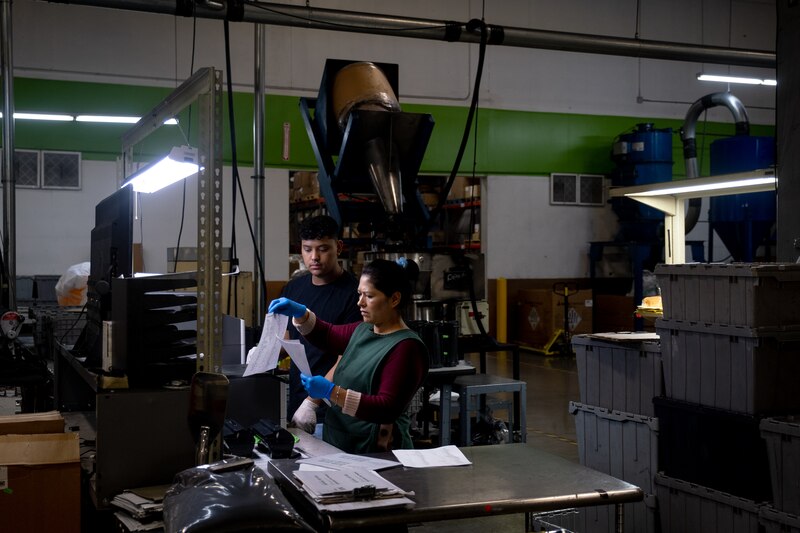
Three years after graduating from Denver Center for International Studies at Montbello, Jimy Hernandez has a daily routine he didn’t anticipate. In high school, Jimy was a middling student but tried hard and enjoyed school. He felt college could be in his future. He considered entering a welding program or majoring in culinary arts or becoming a barber.
His parents were involved in his education. They made it to every parent-teacher conference and encouraged him to succeed.
Jimy tried to stay involved in school and extracurriculars. He took the ACT and completed the usual high school courses. He especially enjoyed history.
Teachers and counselors suggested applying to colleges. But the talk didn’t come with one-on-one practical advising. Left on his own, he didn’t know where to begin.
“To be honest, counselors really helped out more like the honor students and all that,” Jimy said.
Jesse Ramirez, whose INSPiRE organization helps mentor students to get to college, said he’s found that many Hispanic men like Jimy are simply passed over. They might get talked to about college, but are rarely provided practical help, Ramirez said.
The key, he said, is to work with and constantly remind students so they don’t get discouraged. “We can show them that whatever they say their passion is, a college education can enhance that,” Ramirez said.
He’s found mentorship from successful Hispanic men also helps.
Without any of that, Jimy never completed the Free Application for Federal Student Aid, which opens the door to scholarships and federal grants and loans. He did apply for a few scholarships and received about $1,000, but he couldn’t figure out where to go to school.
He didn’t know that community colleges offer many of the programs he was interested in at a fraction of the cost of for-profit institutions. He also didn’t know why the FAFSA was important.
The one school that tried to recruit him, the private, for-profit Lincoln College of Technology, was out of reach financially. He said an adviser told him it would cost about $60,000 to graduate with a welding degree. The amount felt overwhelming.
Jimy knew going to school would eventually allow him to make more money. Federal data shows men with bachelor’s degrees earn almost $1 million more in median lifetime earnings than do high school graduates. Community college graduates earn more, too.
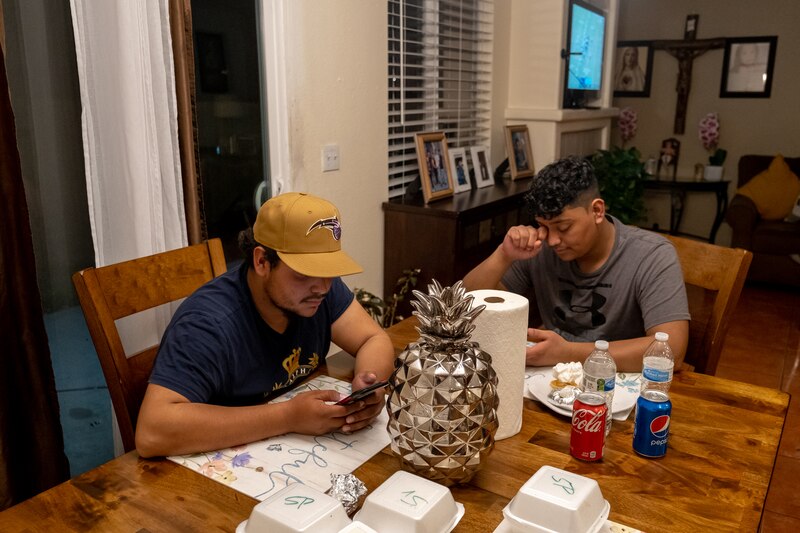
But the reality of forgoing a steady paycheck and taking on steep debt steered him toward work. He bounced among jobs and eventually landed at the asphalt paving company, which started him at $21 an hour with benefits and the opportunity to advance. And his mom said she’s proud of him — and all her children — for how hard he works.
Jimy feels proud that his little brother is getting to fulfill his goals and still nurtures his own college dreams. But Jimy doesn’t know where to start his journey back to school or who could help him learn how to get there.
He remembers having to break the news to his parents that he wouldn’t be going to college. He could sense the disappointment.
“My parents couldn’t really help me,” he said. “So, my mom, she understood.”
How Luis navigated a way
So how did Luis make it to college, especially when he encountered many of the same barriers that his brother faced?
Luis also worked hard and tried to stay involved. He was in yearbook class and took AP English, AP Geography, and other advanced placement and college-level classes.
He became one of the lucky few at his predominately Hispanic high school to head to college. In the 2019-20 school year, about a quarter of DCIS Montbello students pursued postsecondary education, compared with nearly half of Denver Public Schools graduates.
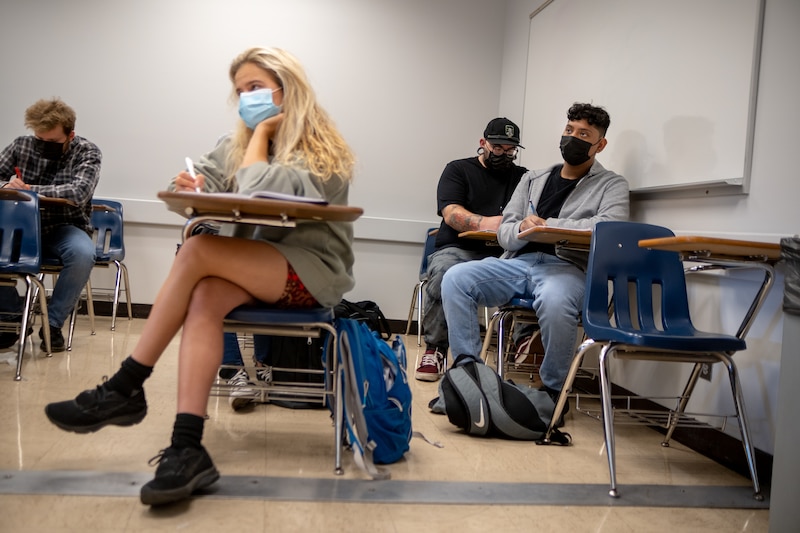
Although he barely knew where to start on campus, staff at MSU Denver’s Pathways to Possible program connected with him and guided him in where to go, how to pay for it, how to pick classes, and how to register for them.
That made all the difference.
Mariela and Jaime celebrated the day Luis started college by taking the family to dinner at a Mexican restaurant. Mariela continues to tell people how proud she is of Luis.
“It’s a blessing,” Mariela said. “I thank God, myself, and my husband for all the hard work that we did to get him there.”
Graduation not a guarantee
Before the pandemic, just 1 in 5 Hispanic men finished with a bachelor’s degree at MSU Denver.
In its defense, MSU Denver officials say their student body enters with more responsibilities and challenges in work, school, family, and life that can hinder the path to graduation. They say the school also receives less state money overall to educate each student than do other schools.
Michael Benitez, who heads MSU Denver’s office of diversity, equity and inclusion, said the school’s tuition remains below that of many other state universities’. That helps lessen student debt and workload, he said. The school also schedules classes to accommodate students who work, Benitez said.
Still, Hispanic men graduate at rates lower than any group except Black men, despite many students at the school facing similar life circumstances.
To boost graduation rates and reduce barriers, the university has created programs like its Pathways program. Funded with federal coronavirus relief dollars, Pathways connects students to counselors, holds freshman orientations, and provides financial aid.
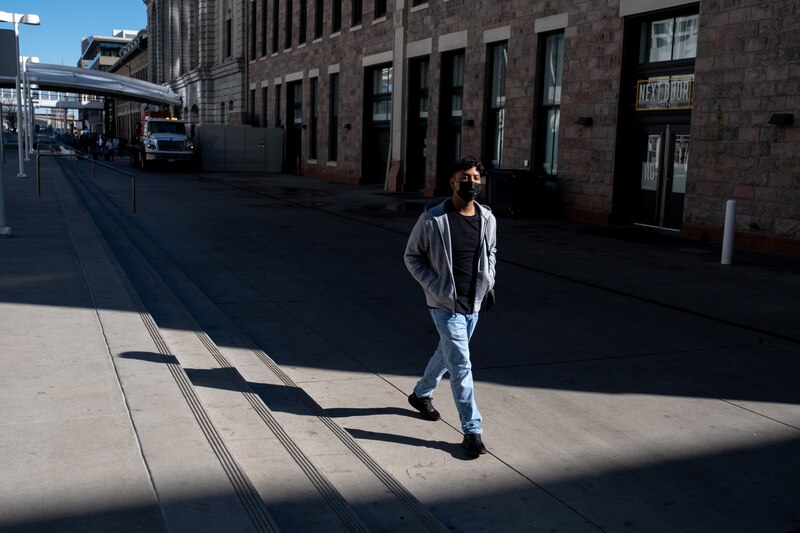
Luis said the program made a huge difference just helping him get in the door. But the program is tiny, with just 125 students — and a potentially huge demand. It’s unfair, Luis said, that there are so few opportunities like Pathways, which could have helped his brother.
“I think about it a lot,” he said. “It’s sad that he didn’t get to go to college because he really wanted to go.”
Luis enrolled in the fall at MSU Denver as a freshman pursuing a specific dream: of becoming a dentist. He always liked getting his teeth cleaned as a kid and the feeling after. He’s taking classes related to medicine and hopes to eventually go to dental school. The classes are tough, he said, but his high school preparation helped him.
To continue in college, Luis works three days a week. That makes for long days, which complicate his more immediate goal: graduating. Statistically, he faces a risk.
Hispanic men at Colorado universities graduate at levels far below their peers. Among the state’s four-year universities, MSU Denver has the lowest graduation rate for Hispanic men.
A success in Georgia
One school that has led the way in graduating first-generation students is Georgia State University. It educates mostly students of color who are the first in their family to go to college or are low-income. Its Hispanic and Black students graduate at the same rate as do white students.
Timothy Renick, who heads The National Institute for Student Success at Georgia State, said the school electronically tracks risk factors each student faces every day, including whether they’re missing school deadlines or having financial troubles. The school takes note of 800 possible risks. That means if a work or life crisis interferes with school, the school can try to intervene.
“Instead of waiting for students in each of those instances to diagnose the problem and come to us for help, we’re reaching out to the students proactively within 24 or 48 hours after we see one of those problems,” Renick said.
In Colorado, no university keeps such detailed notes on students.
On workdays, Luis and his mom clock in at the factory at 6:30 a.m. He usually works until lunch and then heads home to work on homework or takes the light rail to school. His manager gives him the flexibility to work around his class schedule.
Even on the days when he’s off work, Luis rises by 7 a.m.
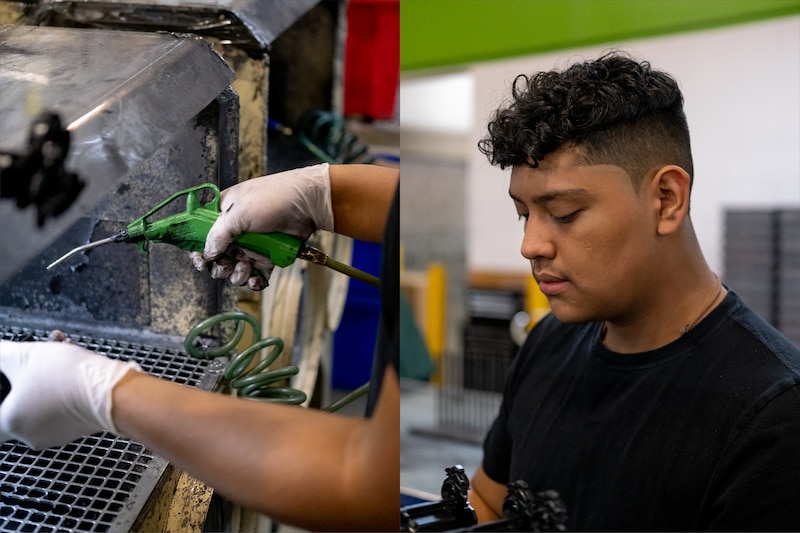
He tries to help out around the house or hang out with his younger brothers. On the rare days he gets time to himself, he says he likes to “enjoy life for a bit.” That usually involves streaming a television show.
He said he seldom feels too tired. He relies on his family’s strength and a Pathways success coach. He took a time management seminar, so he feels equipped to stay on top of his schedule.
But he does worry about whether he can sustain the schedule over the long term and what challenges might derail him.
Role model for an extended family
After a long day, the Hernandez brothers sometimes get to hang out on the couch together. Luis will usually do homework on his laptop. Jimy might be watching the news or scrolling on his phone.
They also get time with their two younger brothers, Alejandro, 13, and Brian, 14. The elder Hernandez brothers share their parents’ college expectations for their brothers.
“I always tell them to stay in school and make something of themselves,” Jimy said.
And Luis hopes he can be an example for his brothers to follow — as well as for other Hispanic men who aspire to someday earn a college degree.
“I have so much pressure being the first one to go to college,” he said. “But my cousins and siblings look up to me and see what I am doing. I want to be an inspiration for them.”
